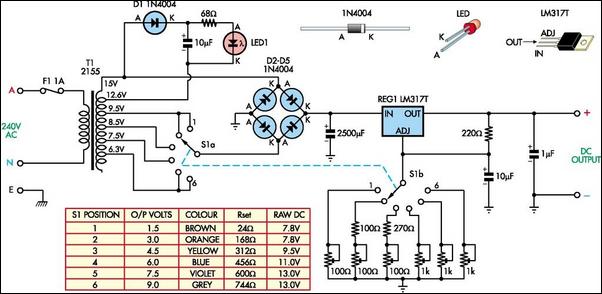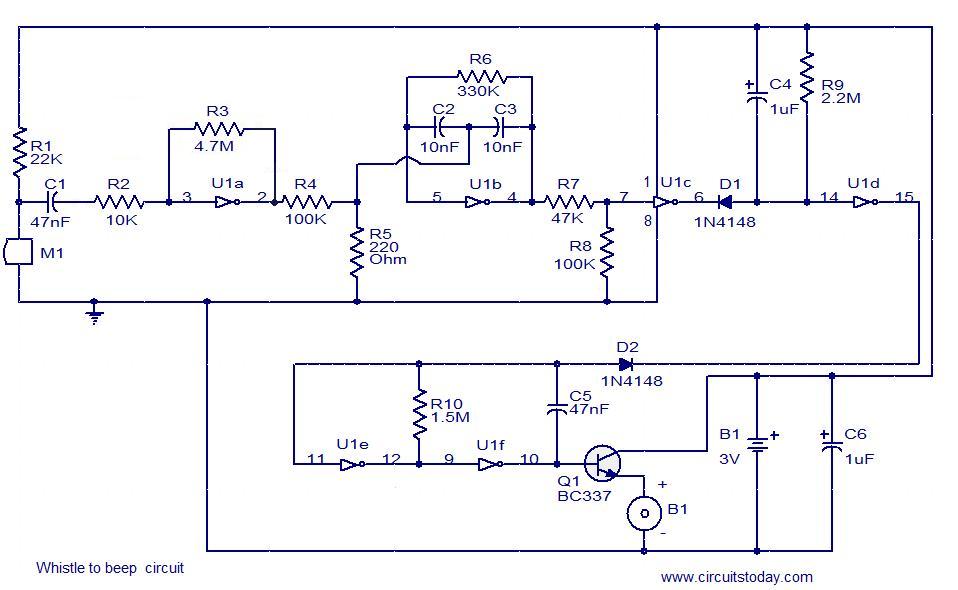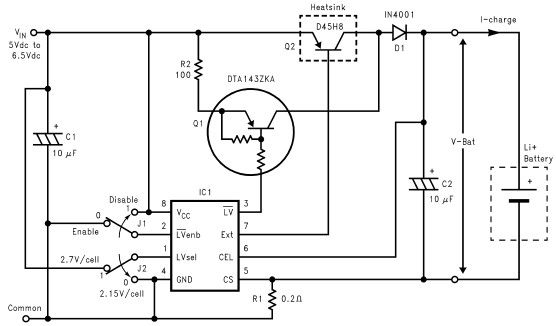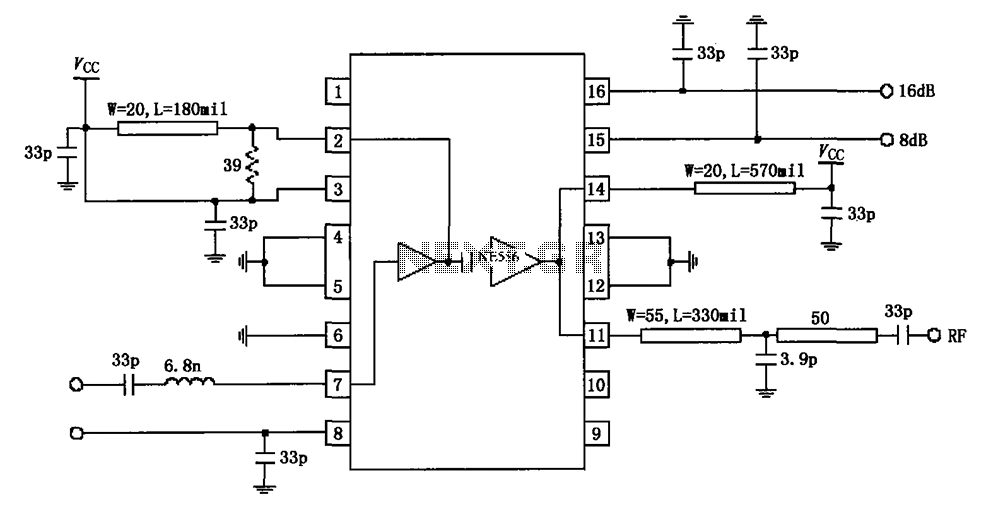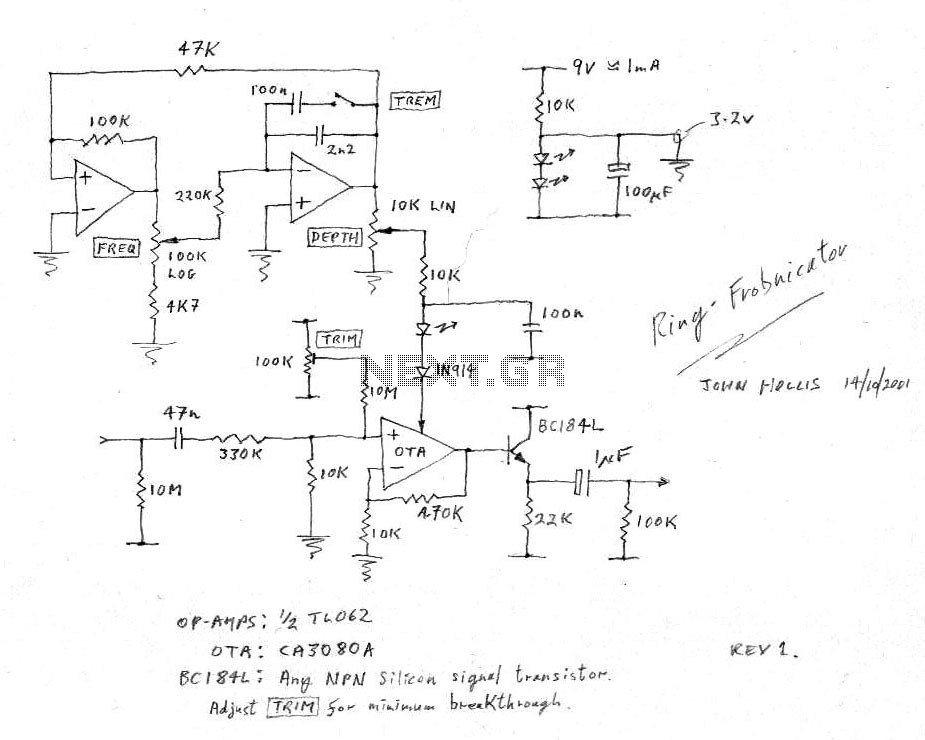
Timer with Alarm Circuit
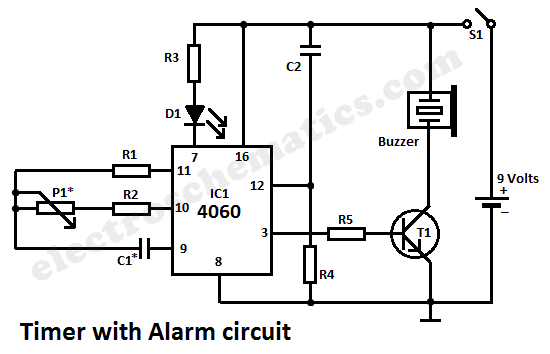
This simple alarm timer circuit is constructed using a 4060 integrated circuit, which features a stable oscillator with a relatively wide frequency range.
The alarm timer circuit utilizes the CD4060 IC, which combines a low-frequency oscillator and a binary counter. The oscillator generates a clock signal that drives the counter, enabling the timing function of the circuit. The frequency of the oscillator can be adjusted by varying the resistor and capacitor values connected to the timing pins of the 4060. This flexibility allows for a wide range of timing intervals, suitable for various applications.
The output of the counter can be configured to trigger an alarm or indicator once a predetermined time has elapsed. This is accomplished by connecting the appropriate output pin of the CD4060 to an alerting device, such as a buzzer or LED. The design can be further enhanced by incorporating additional components, such as a transistor, to drive higher power devices or to create a more complex alarm system.
Powering the circuit typically requires a DC voltage source compatible with the 4060, usually ranging from 3 to 15 volts. Proper bypass capacitors should be included near the power supply pins to ensure stable operation and reduce noise. The entire circuit can be compactly laid out on a PCB, facilitating easy integration into various electronic projects or systems.
Overall, this simple alarm timer circuit demonstrates the versatility of the CD4060 IC in timing applications, providing a reliable and adjustable solution for generating alarms or notifications based on time intervals.This simple alarm timer circuit is made with 4060 which has an integrated oscillator with a good stability with a relatively wide frequency range. In the c.. 🔗 External reference
The alarm timer circuit utilizes the CD4060 IC, which combines a low-frequency oscillator and a binary counter. The oscillator generates a clock signal that drives the counter, enabling the timing function of the circuit. The frequency of the oscillator can be adjusted by varying the resistor and capacitor values connected to the timing pins of the 4060. This flexibility allows for a wide range of timing intervals, suitable for various applications.
The output of the counter can be configured to trigger an alarm or indicator once a predetermined time has elapsed. This is accomplished by connecting the appropriate output pin of the CD4060 to an alerting device, such as a buzzer or LED. The design can be further enhanced by incorporating additional components, such as a transistor, to drive higher power devices or to create a more complex alarm system.
Powering the circuit typically requires a DC voltage source compatible with the 4060, usually ranging from 3 to 15 volts. Proper bypass capacitors should be included near the power supply pins to ensure stable operation and reduce noise. The entire circuit can be compactly laid out on a PCB, facilitating easy integration into various electronic projects or systems.
Overall, this simple alarm timer circuit demonstrates the versatility of the CD4060 IC in timing applications, providing a reliable and adjustable solution for generating alarms or notifications based on time intervals.This simple alarm timer circuit is made with 4060 which has an integrated oscillator with a good stability with a relatively wide frequency range. In the c.. 🔗 External reference
